Netherlands based independent 3D printing resin manufacturer Liqcreate has launched Liqcreate Bio-Med Clear, the newest addition to their already substantial 3D printing resin portfolio. Bio-Med Clear is a biocompatible 3D printing resin, ideal for applications that require non-cytotoxic, non-sensitizing and non-irritating features.
Ruben Bosch, Marketing Sales and Executive at Liqcreate, states that “Liqcreate Bio-Med Clear is designed for a wide range of applications that require biocompatibility. This could range from skin contact applications to medical equipment that requires sterilization to be used in sterile environments.”
This rigid clear photopolymer resin can be processed on most resin based 3D printers. Bio-Med Clear is compatible with Digital Light Processing (DLP), Liquid Crystal Display (LCD), and laser based 3D printing systems operating in the range 385-420nm. Professional 3D-printers like the Asiga & atum3D, as well as entry level models like, Phrozen, Elegoo, Creality & Anycubic, are compatible with this biocompatible resin. 3D printing parameters can be found on the Liqcreate website here.
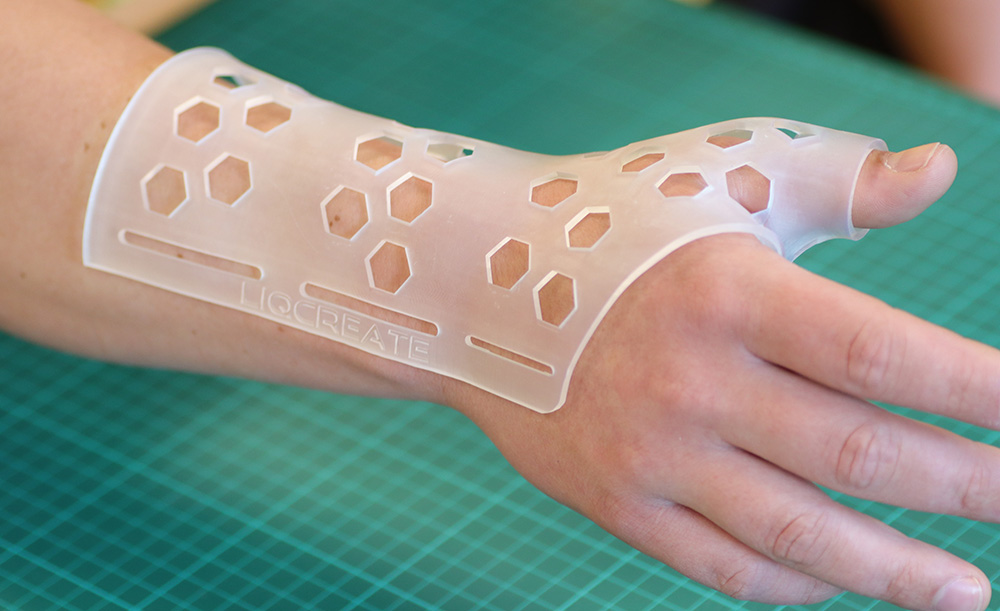
Liqcreate Bio-Med Clear 3D printed parts can pass the following biocompatibility tests:
– Cytotoxicity ISO 10993-5:2009
– Sensitization ISO 10993-10:2021
– Irritation ISO 10993-23:2021
As with all biocompatible materials, it is important to follow Liqcreate’s post-processing guidelines. These guidelines can be found on the Liqcreate website here.
What’s more, 3D-printed parts from Bio-Med Clear can be disinfected with commonly used disinfectants and sterilized by steam sterilization using an autoclave. Standard steam sterilization programs have been validated at 121°C / 250 °F and at 134°C / 273°F for this biocompatible resin. Bio-Med Clear also boasts high accuracy and solid dimensional stability.
“Liqcreate Bio-Med Clear is designed to withstand elevated temperatures during steam sterilization, which does not influence final properties and part performance,” comments Jerzy Hul, Chief Scientific Officer at Liqcreate.
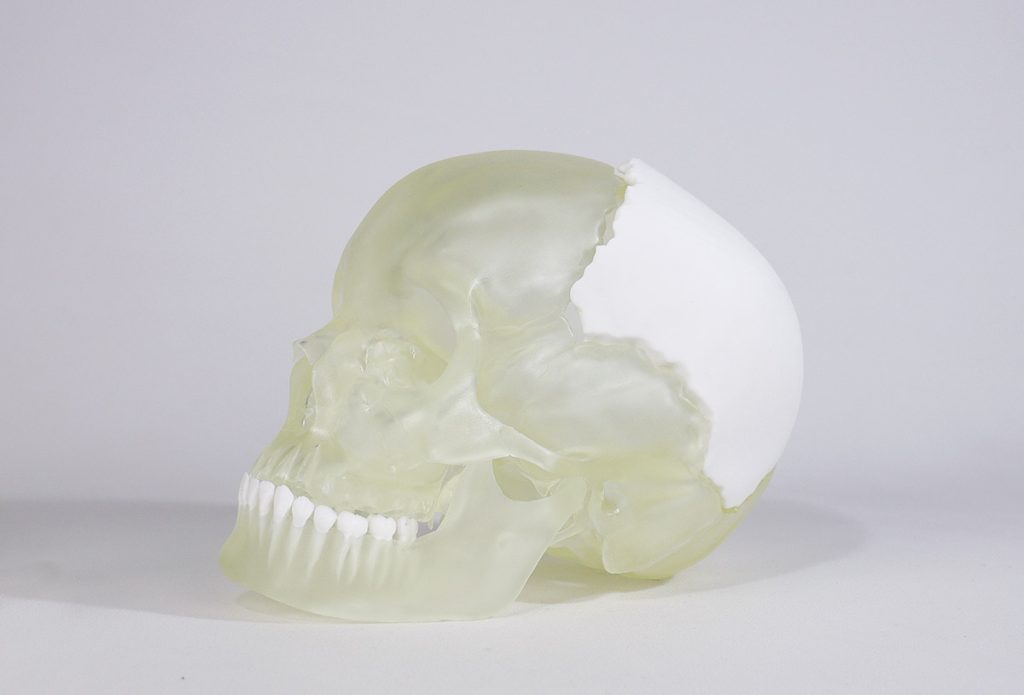
Liqcreate Bio-Med Clear polymer properties
Liqcreate Bio-Med Clear is perfect for applications that require non-cytotoxic, non-sensitisation, and non-irritation properties. The below table provides information regarding the mechanical properties of the Liqcreate Bio-Med Clear resin.
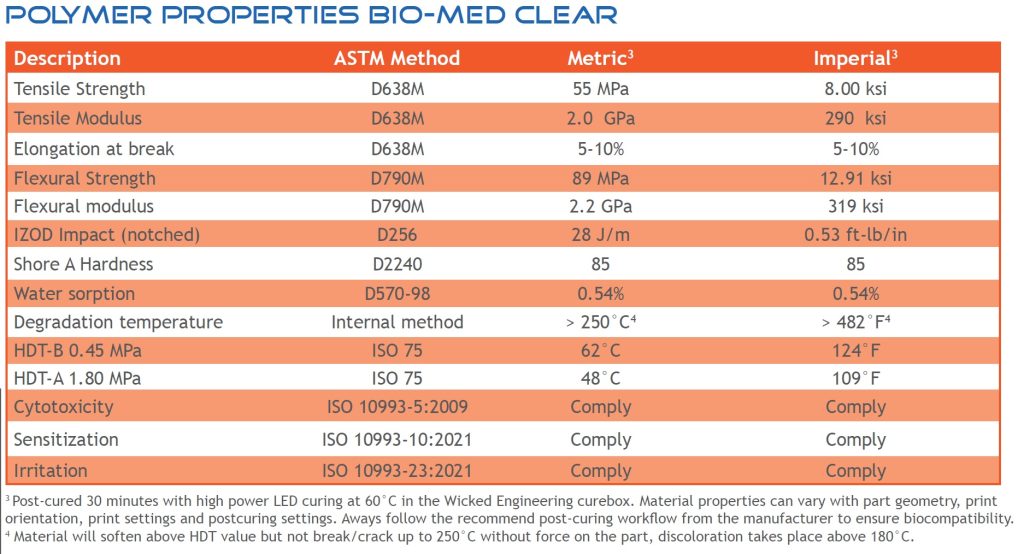
Liqcreate Bio-Med Clear liquid properties

Liqcreate Bio-Med Clear processing workflow
To achieve the previously outlined properties, and to ensure biocompatibility, it is important for users to follow Liqcreate’s validated workflow instructions.
Firstly, prior to printing, users must shake the resin bottle for 2 minutes, and ensure that parts are 3D printed in an environment between 20-25°C. Additional validated 3D printer settings for the 3D printing process can be found on the Liqcreate website.
When it comes to the wash and cure process, users should firstly remove the parts from the build platform, and remove any support structures. Next, it is recommended to wash the 3D printed parts for 2 minutes in IPA or Ethanol in an ultrasonic cleaner. These parts should then be washed for a second time in fresh IPA or Ethanol for a further 2 minutes. After washing, the parts should be left to dry under ambient conditions for at least 60 minutes. Finally, users are advised to cure the parts for 30 minutes at 60℃ in the Wicked Engineering Curebox.
Liqcreate advises that, when utilizing the Bio-Med Clear resin to produce regulated medical devices, customers should contact a Liqcreate representative to discuss the application before use.
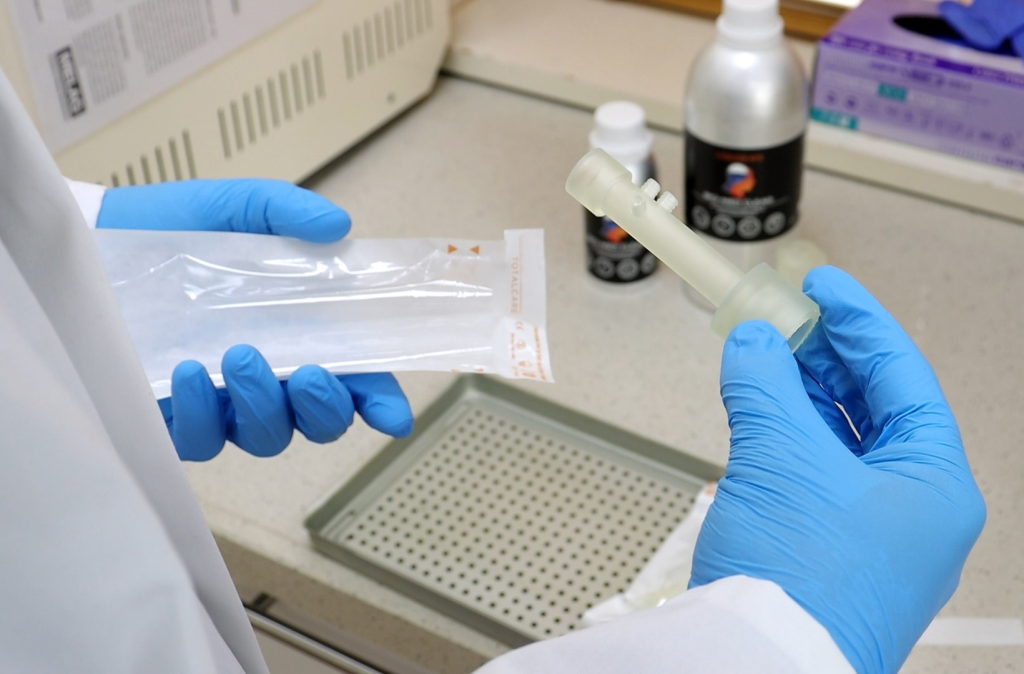
Liqcreate Bio-Med Clear properties after sterilization
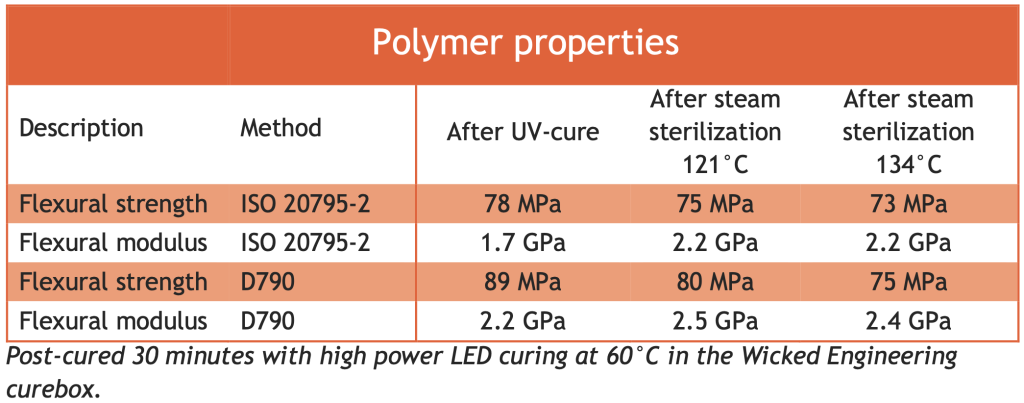
Comparison after sterilization
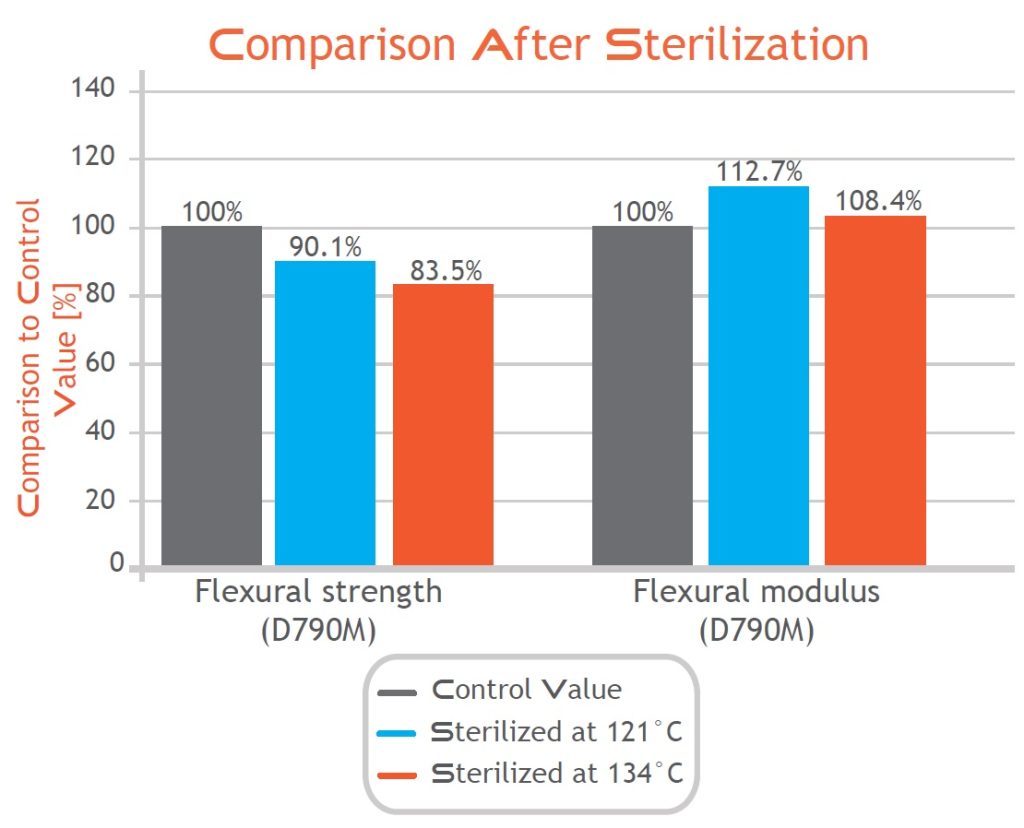
As the results in the above graph highlight, the properties of the final parts show minimal changes after steam sterilization. Due to these minimal changes, Bio-Med Clear parts can easily and safely be used in an autoclave.
OEM possibilities for biocompatible 3D-printing resins
For OEM partners, Bio-Med Clear can be re-branded and registered for different use cases. Alongside its branded resin range, Liqcreate also provides a custom development service, offering non-standard formulas for specific applications. Through this service, customers can request the development of a polymer possessing precise characteristics, which impact its printing speed, as well as the properties of the resulting part.
As an independent resin manufacturer with R&D facilities, Liqcreate is capable of rapidly scaling its production of custom made resins where needed. Moreover, the standalone nature of the company ensures that there is minimal competition or conflict when working with 3D printer hardware manufacturers. This ensures that the firm can work quickly, and get resins to market in quantity, avoiding any issues or delays that would keep clients waiting.
Order information
Customers can find out more about Liqcreate’s material portfolio, and the new Bio-Med Clear photopolymer 3D printing resin, by visiting the Liqcreate website or reaching out to a Liqcreate representative or dealer.
Subscribe to the 3D Printing Industry newsletter to ensure you keep up with the latest 3D printing news. You can also follow us on Twitter, like our Facebook page, and subscribe to the 3D Printing Industry Youtube channel to access more exclusive content.
Are you interested in working in the additive manufacturing industry? Visit 3D Printing Jobs to view a selection of available roles and kickstart your career.
Featured image shows the new Liqcreate Bio-Med Clear resin alongside biocompatible 3D printed parts. Image via Liqcreate.


